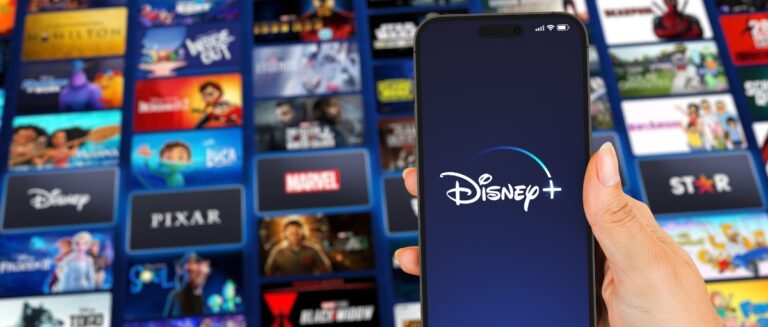Have you always dreamed of seeing your name on a book cover? Of holding your very own novel, memoir, or collection of poems in your hands? For many seniors, publishing a book remains an unfulfilled lifelong ambition—but it doesn’t have to be. If you’re curious how to publish a book for free, read along, as this article will give you an in-depth walkthrough.
Thanks to the rise of digital publishing, it’s now possible to write, edit, and launch your book to a worldwide audience without spending a dime. In fact, Research indicates that 191 million e-books were sold in the US in 2020, generating over $1 billion in sales. Numerous success stories from older authors who finally took the plunge are among this avalanche of self-published books.
Learning how to self-publish a book for free doesn’t mean you’ll be skimping on quality. With the right tools and guidance, your self-published book can be every bit as polished and professional as a traditionally published one.
We’ll walk you through every step of the process, from getting your manuscript ready to hitting the “publish” button on Amazon. We’ll reveal the best free writing and editing software, show you how to create a stunning cover without spending a cent, and compare the top free publishing platforms. Plus, you’ll learn low-cost and no-cost strategies to market and sell your book and build a devoted readership.
No more excuses—it’s time to make your publishing dreams a reality.
Writing and Editing Tips
Before diving into the exciting world of free publishing, there’s one crucial step: ensuring your book is the best it can be. While it’s tempting to rush to hit that “publish” button, taking the time to write and edit your manuscript properly will pay off in the long run.
The Self-Editing Process
Self-editing is a skill every writer should learn, regardless of whether you’re aiming for a traditional publishing deal or going the self-publishing route. Here are some techniques to try:
- Read your work out loud: This can help you catch awkward phrasing, missing words, and excessive repetition.
- Use editing software: Tools like Grammarly or the Hemingway App can flag spelling and grammar errors and highlight areas where your writing could be clearer or more concise.
- Take breaks between revisions: Writing is a mental exercise; taking breaks helps reset and recharge the brain and body, keeping the mind sharp and focused.
- Focus on one aspect at a time: Rather than perfect everything at once, do target passes for different elements, such as plot holes, character inconsistencies, or dialogue.
Remember, self-editing is an iterative process. Your book may need to undergo multiple rounds of revisions before it is ready for the next step.
The Power of Feedback
While self-editing is essential, getting feedback from others is equally important. Beta readers—whether they’re friends, family members, or fellow writers—can provide valuable insights into what’s working in your book and what could be improved.
To find beta readers, consider:
- Joining a local writing group or workshop
- Connecting with other writers online through forums or social media
- Asking avid readers in your genre if they’d be willing to provide feedback
When working with beta readers, be open to constructive criticism and use their feedback to guide your revisions. At the same time, remember that not every piece of advice needs to be taken. Trust your instincts and stay true to your vision for your book.
Preparing Your Final Manuscript
Once you’ve completed your self-edits and incorporated feedback from beta readers, it’s time to get your manuscript ready for publication. This means:
- Ensuring your manuscript is in a clean, standard format (typically a 12-point serif font like Times New Roman, double-spaced)
- Creating a table of contents and any necessary front matter (like a title page or copyright notice) and back matter (like an “About the Author” page)
- Proofreading for any lingering typos or formatting issues
With a polished, professional manuscript in hand, you’re ready to move on to the next stage of your publishing journey. Remember, the effort you put into writing and editing will lay the foundation for your book’s success.
Setting Your Book Up for Success: Pre-Publication Prep
You’ve poured your heart into writing your book—now it’s time to prepare it for its big debut. While the idea of launching your book into the world may be daunting, a little preparation goes a long way in setting your book up for success.
Know Your Audience
One of the most important steps in the pre-publication process is researching your target market. According to Harvard Business School, 68% of consumers expect all experiences to be personalized. This means it is crucial to identify successful books in your genre and study what makes them resonate with readers. Take note of:
- The covers: What colors, fonts, and imagery are commonly used? How can you make your cover stand out while still fitting in with your genre?
- The descriptions: How do these books position themselves? What key selling points do they highlight?
- The reviews: What do readers praise about these books? What do they wish was different?
Use these insights to guide your own book’s positioning and marketing. Aim to differentiate yourself from the competition while still appealing to your target audience’s preferences.
Crafting Your Title and Subtitle
Your book’s title and subtitle are often the first things a potential reader will see, so it’s crucial to make them as compelling as possible. A useful framework is the PINC method:
- Promise: What can readers expect to gain from your book?
- Intrigue: How can you spark curiosity or interest?
- Need: What problem does your book solve, or what desire does it fulfill?
- Content: What is your book actually about?
Aim for a title that’s both memorable and informative, giving readers a clear idea of your book’s main premise or benefit. If you’re stuck, try browsing bestseller lists in your genre for inspiration.
Your Book Description and Author Bio
Once you’ve captured a reader’s attention with your title and cover, it’s time to reel them in with your book description and author bio. Your description should provide a tantalizing snapshot of your book’s plot, themes, or main takeaways, leaving readers eager to dive in and learn more.
When crafting your description, consider the following:
- Studying the descriptions of similar titles to see what works
- Using short, punchy sentences and paragraphs to maintain interest
- Highlighting your book’s unique selling points or most compelling aspects
- Ending with a strong call to action, whether it’s to buy the book, leave a review, or join your mailing list
Your author bio is a chance to build a personal connection with potential readers. Aim for a bio that’s professional yet approachable, highlighting your credentials or experiences that are relevant to your book’s topic. Don’t be afraid to inject some personality and let readers get to know the person behind the words.
Judging a Book By Its Cover
We’ve all heard the adage, “Don’t judge a book by its cover,” but a strong, eye-catching cover is essential for standing out in a crowded market. Even if you’re using free book publishing, it’s worth investing some time into creating a professional cover that accurately represents your book’s genre and content.
Some free and low-cost cover design options include:
- Using templates on free design platforms like Canva
- Searching for free stock images on sites like Unsplash or Pixabay
- Hiring affordable designers on platforms like Fiverr or 99designs
When designing your cover, prioritize clarity and legibility, especially for the title and author name. Make sure the imagery and color scheme are appropriate for your genre and target audience.
By taking the time to research your market, craft strong titular and descriptive copy, and create an appealing cover, you’ll be well on your way to positioning your book for success.
Where Can You Publish a Book for Free?
With your book polished and ready to go, it’s time to decide where and how to publish it. Fortunately, there are numerous free publishing platforms to publish your book and make it easy to get your book into the hands of readers worldwide.
Some of the most popular options include:
- Amazon Kindle Direct Publishing (KDP): As the world’s largest online bookstore, Amazon offers unparalleled reach for your book. KDP allows you to publish e-books and paperbacks for free, with up to 70% royalties on e-book sales.
- Draft2Digital: This user-friendly platform distributes your e-book to a network of online retailers, including Apple Books, Barnes & Noble, and Kobo. It offers free formatting tools and a simple interface for managing your book’s sales and marketing.
- Smashwords: Similar to Draft2Digital, Smashwords distributes your e-book to major retailers and library networks. They offer a higher royalty rate (up to 80%) for sales made directly through their platform.
- Apple Books: If you want to reach Apple’s vast user base, you can publish directly to Apple Books. They offer a 70% royalty rate and a user-friendly interface for uploading and managing your book.
- Kobo Writing Life: Kobo is a major e-reader and e-book retailer, particularly popular in Canada and other international markets. Their self-publishing platform offers a 70% royalty rate and easy-to-use tools for uploading and promoting your book.
- Barnes & Noble Press: As the largest retail bookseller in the US, Barnes & Noble offers a powerful platform for reaching a broad audience. You can publish both e-books and paperbacks, with royalties of up to 70% on e-book sales.
When deciding which platform(s) to use, consider factors like royalty rates, distribution reach, exclusive vs. non-exclusive agreements, and the user-friendliness of their tools and dashboards. Many authors choose to “go wide” by publishing on multiple platforms to maximize their reach and income potential.
Formatting and Uploading Your Book
With your platform chosen, it’s time to get your book ready for publication. This involves formatting your manuscript for digital or print distribution and uploading it to your chosen platform.
While each platform has its own specific requirements, the general process involves:
- Formatting your manuscript: Your e-book file needs to be in a format that’s compatible with e-readers (typically EPUB or MOBI). Many free tools, like Reedsy Book Editor or Draft2Digital’s formatting tool, can convert your manuscript into these formats, ensuring a professional look and smooth reading experience. For print books, you’ll need a PDF file with the appropriate margins, trim size, and page numbering.
- Creating front and back matter: Your book should include a title page, copyright page, table of contents, and any desired front matter (like a dedication or preface) and back matter (like an “About the Author” page or list of other titles).
- Uploading your files: Once your files are ready, you’ll upload them to your chosen platform(s). This typically involves filling out metadata (like your book’s title, description, and keywords), setting your price and distribution preferences, and uploading your cover image.
Most platforms offer step-by-step guides and support to walk you through the uploading process. Take your time to ensure all the details are correct before hitting “publish”.
Getting Ready for Launch Day
Your book is almost ready to meet the world! But before you hit that “publish” button, there are a few key steps to set your book up for a successful launch.
Gather Early Reviews
Reviews are crucial for establishing your book’s credibility and enticing potential readers to give it a chance. Before your official launch, consider the following:
- Sending Advance Reader Copies (ARCs) to book bloggers, influencers, or reviewers in your genre.
- Leveraging your personal network to gather reviews from friends, family, or colleagues.
- Offering free copies to your email list or social media followers in exchange for an honest review.
Build Your Online Presence
In today’s digital age, having a strong online presence is essential for connecting with readers and promoting your book. Consider:
- Setting up an author website or landing page with information about you and your book, plus links to purchase.
- Creating profiles on key social media platforms where your target readers spend time.
- Starting an email newsletter to build relationships with your audience and share updates.
Prepare Promotional Materials
To spread the word about your book, you’ll want to have a variety of promotional materials ready to go. These might include:
- Graphics optimized for social media featuring your book cover, key quotes, or promotional info.
- A press release or pitch email to send to media outlets or influencers.
- Excerpts or teasers from your book to share on your website or social media.
- A book trailer or video introducing yourself and your book.
By laying this groundwork before launch, you’ll be well-positioned to hit the ground running and generate buzz for your book.
Launching and Marketing Your Book
You’ve hit “publish”—now it’s time to celebrate and spread the word far and wide! Here are some key strategies for getting your book in front of as many potential readers as possible:
- Leverage Your Network: Contact your personal and professional connections to tell them about your book. Ask them to buy a copy, leave a review, or share it with their own networks if they enjoyed it.
- Harness the Power of Social Media: Share the news of your book’s release on all your social media channels. Post engaging graphics, excerpts, or behind-the-scenes content to generate interest. Consider running a social media contest or giveaway to incentivize shares and reviews.
- Reach Out to Media and Influencers: Research bloggers, podcasters, or media outlets that cover books in your genre. Send a personalized pitch email introducing yourself and your book and offering a free copy for review or potential coverage.
- Leverage Free Promotional Sites and Platforms: Numerous websites and platforms are dedicated to promoting free or discounted e-books. Some popular options include:
- BookFunnel: Allows you to easily distribute free copies of your book to reviewers or email subscribers.
- Story Origin: A platform for running newsletter swaps, group promotions, and review copy distribution.
- FreeBooksy: A popular email newsletter that promotes free and discounted e-books to a large subscriber base.
- Plan a Virtual Book Tour: Since in-person events may not be feasible, consider planning a virtual book tour. This could include guest posts on relevant blogs, podcast interviews, or live Q&A sessions on social media.
- Keep the Momentum Going: Your launch is just the beginning—to keep sales and interest high, you’ll want to continue marketing your book on an ongoing basis. This might involve:
- Regularly sharing content related to your book’s themes on your blog or social media.
- Participating in online book clubs or discussions.
- Offering special promotions or discounts to newsletter subscribers.
- Running targeted ads on platforms like Amazon or Facebook.
- Networking with other authors in your genre for potential cross-promotion opportunities.
Remember, marketing your book is a marathon, not a sprint. Consistently engaging with your audience and finding new ways to get your book in front of potential readers will help you build momentum and establish a loyal fan base over time.
A Dream Realized: You Are Now a Published Author!
Writing and publishing a book is no small feat—it takes dedication, hard work, and courage to put your story out into the world. In 2022, 48.5% of Americans reported reading one or more books for pleasure. By following the steps outlined, you’ve taken your publishing dreams from idea to reality for all those readers, without spending a dime.
But publishing your book is just the beginning. As a published author, you now have the opportunity to connect with readers, build a loyal fan base, and leave a lasting legacy. Your words have the power to inspire, educate, and entertain, touching the lives of people you may never meet.
So, celebrate this incredible accomplishment—but don’t stop there. Keep writing, publishing, and sharing your unique voice and perspective with the world. The best is yet to come!
Armed with these resources and your determination, you’re well on your way to becoming a successful self-published author. Happy publishing!
Sources
Toner Buzz. (2023). How many books are published each year? Retrieved from https://www.tonerbuzz.com/blog/how-many-books-are-published-each-year/
LinkedIn. (2023). How to take a purposeful break from writing (and why writers should). Retrieved from https://www.linkedin.com/pulse/how-take-purposeful-break-from-writing-why-writers-relief-smith/
Harvard Business School (HBS). (2023). What is a target audience in marketing? Retrieved from https://online.hbs.edu/blog/post/target-audience-in-marketing
Barnes & Noble. (n.d.). About Barnes & Noble. Retrieved from https://www.barnesandnobleinc.com/about-bn/
Scholarly Kitchen. (2024). Reading: It can’t be about the numbers. Retrieved from https://scholarlykitchen.sspnet.org/2024/01/26/reading-it-cant-be-about-the-numbers/











